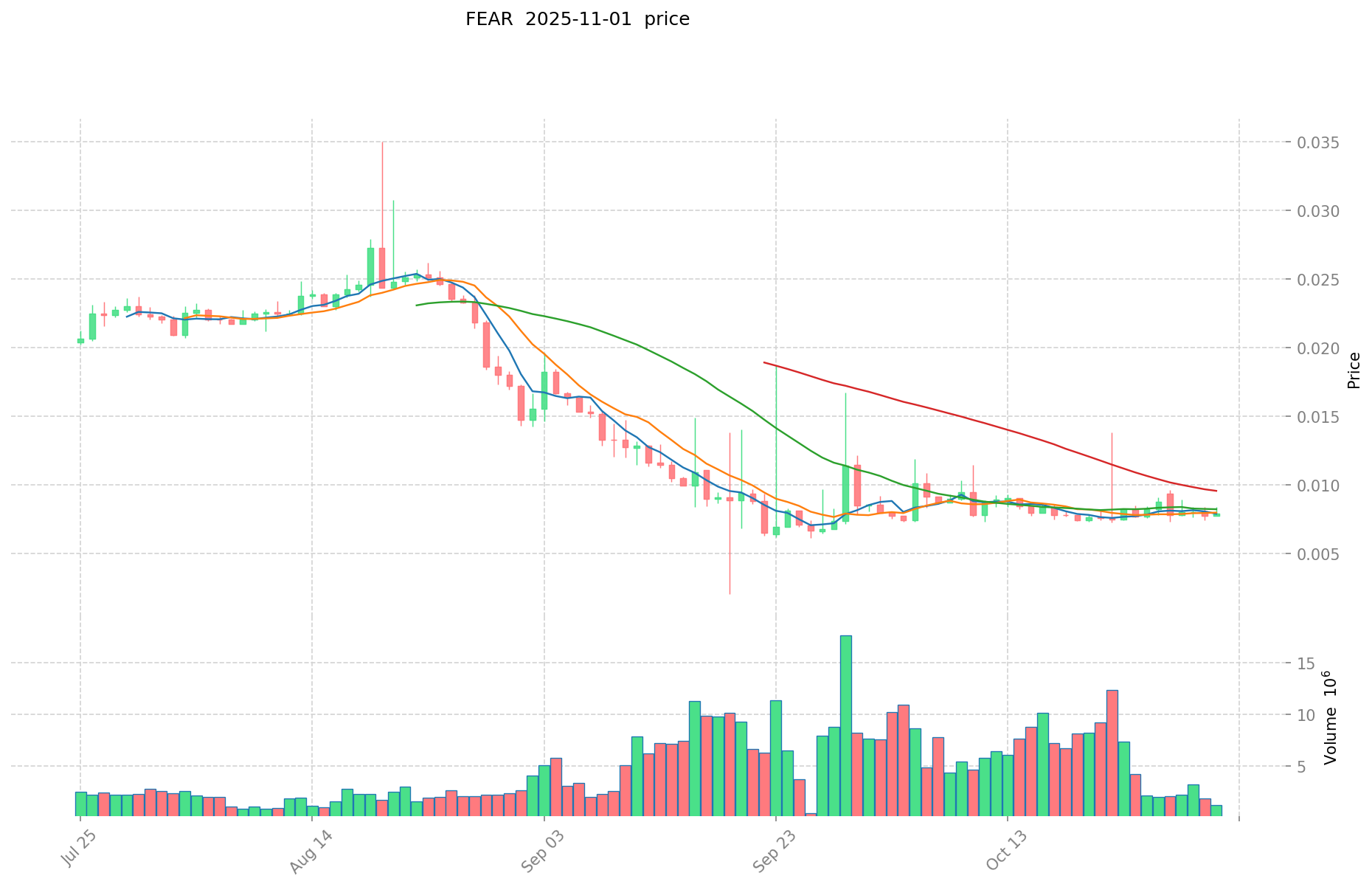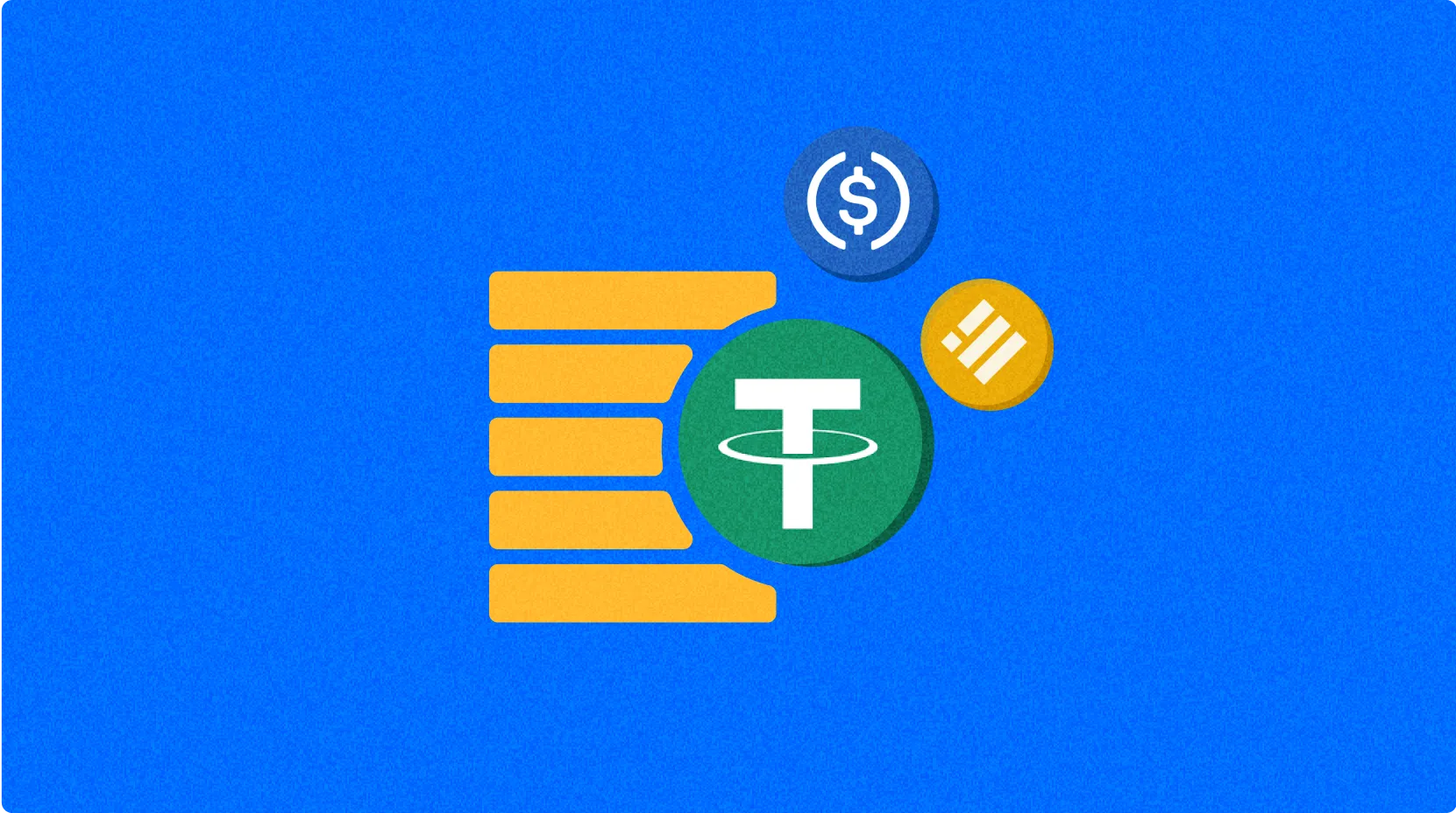FEAR nedir: Kararlarımızı ve Davranışlarımızı Belirleyen Gizli Güç


FEAR'ın Konumlandırılması ve Önemi
2021 yılında ünlü Whack It serisinin yaratıcıları, oyun ve NFT sektöründeki sorunları çözmek amacıyla FEAR’ı (FEAR) geliştirdi.
İlk karma NFT tokenı ve blokzincir tabanlı korku oyun markası olarak FEAR, oyun, NFT ve kazan-kazan alanlarında önemli bir rol üstleniyor.
2025 yılı itibarıyla FEAR, 1.649 sahip ve aktif bir geliştirici topluluğuyla blokzincir oyun ekosisteminde değerli bir varlık haline geldi. Bu makalede teknik altyapısı, piyasa performansı ve gelecekteki potansiyeli ayrıntılı olarak incelenecektir.
Kökeni ve Gelişim Süreci
Doğuş Arka Planı
FEAR, Whack It serisinin yaratıcıları tarafından 2021’de blokzincir teknolojisi ve NFT’leri oyun endüstrisine entegre ederek sektöre yenilik getirmek amacıyla oluşturuldu.
NFT ve blokzincir oyunlarının yükselişi döneminde doğan FEAR, oynayarak kazanma mekanizmalarıyla oyunculara benzersiz deneyimler ve finansal fırsatlar sunmayı hedefledi.
FEAR’ın lansmanı, oyunculara ve NFT tutkunlarına yeni imkanlar sundu.
Önemli Dönüm Noktaları
- 2021: Ana ağın faaliyete geçmesiyle NFT ve blokzincir oyun entegrasyonu sağlandı.
- 2021: Token, 30 Kasım’da $3,88 ile en yüksek seviyesine ulaştı.
- 2025: Ekosistemin genişlemesiyle birçok korku oyunu ve NFT koleksiyonu piyasaya sürüldü.
Topluluğun ve geliştirme ekibinin desteğiyle FEAR, oyun sektöründe teknolojiyi, güvenliği ve gerçek dünya uygulamalarını sürekli olarak geliştiriyor.
FEAR Nasıl Çalışır?
Merkeziyetsiz Kontrol
FEAR, küresel olarak yayılan bilgisayar ağında (düğümler) merkeziyetsiz şekilde çalışır; geleneksel oyun şirketleri veya merkezi otoritelerin etkisinden bağımsızdır.
Bu düğümler işlemleri doğrulamak için birlikte çalışır, sistemin şeffaflığını ve saldırılara karşı dayanıklılığını sağlar; kullanıcılara daha fazla kontrol ve ağda yüksek direnç sunar.
Blokzincir Temeli
FEAR’ın blokzinciri, tüm işlemlerin ve NFT sahipliğinin kaydedildiği halka açık, değiştirilemez dijital bir defterdir.
İşlemler bloklar halinde gruplanır ve kriptografik özetlerle birbirine bağlanarak güvenli bir zincir oluşturulur.
Herkes bu kayıtları inceleyebilir; aracıya gerek olmadan güven sağlanır.
Adil İşleyişin Sağlanması
FEAR, işlemleri doğrulamak ve çift harcama gibi sahteciliğin önüne geçmek için bir mutabakat mekanizması kullanır.
Katılımcılar, staking veya düğüm çalıştırma gibi yöntemlerle ağın güvenliğini sağlar ve FEAR tokenlarıyla ödüllendirilir.
Güvenli İşlemler
FEAR, işlemleri korumak için açık-özel anahtar şifreleme teknolojisi kullanır:
- Özel anahtarlar (gizli şifre gibi) işlemleri imzalar
- Açık anahtarlar (hesap numarası gibi) sahipliği doğrular
Bu sistem, fonların güvenliğini garanti ederken işlemlerde belirli bir mahremiyeti de korur.
Ek olarak, oyun amaçlı NFT entegrasyonu ve akıllı sözleşme desteği sunar.
FEAR’ın Piyasa Performansı
Dolaşım Özeti
1 Kasım 2025 itibarıyla FEAR’ın dolaşımdaki arzı 17.715.412 token; toplam arzı 41.739.201,62033058’dir.
Yeni tokenlar madencilik ve ödüller yoluyla piyasaya girerek arz-talep dengesini etkiler.
Fiyat Dalgalanmaları
FEAR, 30 Kasım 2021’de $3,88 ile en yüksek seviyesine ulaştı; bu artış genel kripto piyasa boğası etkisiyle gerçekleşti.
En düşük fiyatı ise $0,00629862 ile 23 Eylül 2025’te, küresel piyasa düşüşleri nedeniyle görüldü.
Bu dalgalanmalar, piyasa algısını, benimseme eğilimlerini ve dışsal faktörleri yansıtır.

Zincir Üstü Metrikler
- Günlük işlem hacmi: $10.443,613761 (ağ aktivitesini gösterir)
- Aktif adres: 1.649 (kullanıcı katılımını gösterir)
FEAR Ekosistemi Uygulamaları ve Ortaklıkları
Temel Kullanım Alanları
FEAR ekosistemi birçok uygulamayı destekler:
- Oyun: FEAR, ilk karma NFT token ve blokzincir tabanlı korku oyun markasıdır; oyuncular NFT dünyasına katılır, oyun oynar ve ödül kazanır.
- NFT’ler: FEAR, NFT satış ve işlemlerine katılım imkanı sunar; korku oyun evrenlerinde sahiplerine ve kullanıcılara ayrıcalıklar sağlar.
Stratejik Ortaklıklar
FEAR, Gather Network ile iş birliği yaparak ödül sistemini ve kullanıcı etkileşimini güçlendirmiştir. Bu ortaklıklar, FEAR’ın ekosistem büyümesi için sağlam bir temel oluşturur.
Tartışmalar ve Zorluklar
FEAR şu zorluklarla karşı karşıya:
- Piyasa Dalgalanması: $3,88’den $0,007545’e kadar yaşanan büyük fiyat düşüşü, uzun vadeli istikrarı sorgulatıyor.
- Benimseme: Korku temalı niş bir token olarak FEAR, genel kullanıcı kitlesinde yaygın kabulde zorluk yaşayabilir.
- Rekabet: Proje, oyun ve NFT odaklı diğer kripto varlıklarla rekabet içinde.
Bu sorunlar, toplulukta ve piyasada tartışmalara yol açıyor ve FEAR’ın sürekli yeniliğine zemin hazırlıyor.
FEAR Topluluğu ve Sosyal Medya Atmosferi
Hayran Heyecanı
FEAR topluluğu, son verilere göre 1.649 sahip ile orta derecede aktif.
X platformunda ilgili gönderiler ve hashtag’ler (ör. #FEAR) özellikle oyun çıkışları veya NFT satışlarında zaman zaman öne çıkıyor.
Fiyat hareketleri ve yeni oyun özellikleri topluluk ilgisini artırıyor.
Sosyal Medya Eğilimi
X platformundaki eğilimler karmaşık bir tablo çiziyor:
- Destekçiler, FEAR’ın benzersiz korku oyunu nişi ve NFT entegrasyonunu yenilikçi bir birleşim olarak görüyor ve övgüyle karşılıyor.
- Eleştirmenler ise fiyat dalgalanması ve projenin kripto piyasasındaki dar kapsamına odaklanıyor.
Son gelişmeler, piyasa zorluklarına karşı ihtiyatlı bir iyimserlik olduğunu gösteriyor.
Gündem Konuları
X kullanıcıları FEAR’ın oyun geliştirmeleri, NFT lansmanları ve token kullanım alanları üzerine aktif tartışmalar yürütüyor; hem yenilikçi potansiyelini hem de rekabetçi kripto oyun piyasasında güncel kalma zorluklarını vurguluyor.
FEAR Hakkında Daha Fazla Bilgi Kaynağı
- Resmi Web Sitesi: Özellikler, kullanım alanları ve son gelişmeler için FEAR’ın resmi web sitesini ziyaret edin.
- X Güncellemeleri: X platformunda FEAR, @fearnfts hesabı ile oyun güncellemeleri, NFT lansmanları ve topluluk etkinlikleri hakkında aktif paylaşımlar yapıyor.
FEAR’ın Gelecek Yol Haritası
- Sürekli Gelişim: Korku oyun ekosistemini ve NFT portföyünü geliştirmeye devam etmek.
- Ekosistem Hedefleri: Kullanıcı sayısını artırmak ve oyun/NFT alanında iş birliklerini genişletmek.
- Uzun Vadeli Vizyon: FEAR’ı korku temalı dijital deneyimlerde lider bir token yapmak ve faydasını artırmak.
FEAR’a Nasıl Katılım Sağlanır?
- Satın Alma Kanalları: FEAR’ı Gate.com üzerinden satın alın
- Depolama Çözümleri: ERC-20 uyumlu güvenli cüzdanlarda saklayın
- Oyunlara Katılım: FEAR’ın korku oyunları ve NFT ekosisteminde yer alın
- Topluluk Etkinliği: Güncellemeler ve etkinlikler için FEAR’ın sosyal medya hesaplarını takip edin
Özet
FEAR, blokzincir teknolojisi ile korku oyunlarının kesişimini yeniden tanımlayarak benzersiz oyun deneyimi, NFT entegrasyonu ve token kullanımı sunuyor. Aktif topluluğu, odaklı kaynakları ve niş piyasa konumu ile kripto oyun sektöründe öne çıkıyor. Piyasa dalgalanması ve sınırlı ilgi gibi zorluklara rağmen, FEAR’ın yenilikçi yapısı ve korku oyunlarına odaklanması, merkeziyetsiz oyun teknolojilerinin geleceğinde ona ayrı bir yer kazandırıyor. Kripto oyun dünyasında yeni veya deneyimli olmanız fark etmeksizin FEAR, kendi kategorisinde dikkatle takip edilmesi ve katılım sağlanması gereken bir proje olarak öne çıkıyor.
Sıkça Sorulan Sorular
Korkunun gerçek anlamı nedir?
Korku, olası bir tehlikeyi haber veren evrimsel bir uyarı mekanizmasıdır ve vücudu hayatta kalmaya hazırlar. İnsanların tehditlere karşı tarih boyunca başa çıkmasına yardımcı olan doğal bir tepkidir.
Korkunun temelinde hangi duygu yatar?
Kaygı, korkunun temel duygusudur. Olası zarar veya tehdit nedeniyle ortaya çıkar; bizi korumaya yönlendirir.
Kutsal Kitap’a göre korku nedir?
Kutsal Kitap’ta korku, hem Tanrı’ya duyulan saygı ve hayranlık hem de tehlikenin getirdiği endişeyi ifade eder. İlişkilerde saygı ve dikkat ön plandadır.
Korkunun 4 türü nedir?
Korkunun 4 türü; savaşma, donma, bayılma ve kaçmadır. Bunlar, algılanan tehditlere karşı temel hayatta kalma tepkileridir.

OIK nedir

GAMESTARTER nedir: Bağımsız oyun geliştiricileri ve oyunculara yönelik devrim yaratan bir platform

DOMI nedir: İş dünyasında operasyonları kökten değiştiren devrim niteliğinde bir Dijital Varlık Yönetim Sistemi

ISK nedir: İzlanda para birimi ve küresel finansta oynadığı rol

PLA nedir: Sürdürülebilir üretimi dönüştüren biyobozunur bir plastik devrimi

Kuantum Hesaplama Çağı Geliyor mu? Bitcoin'in Post-Kuantum Güvenliğine Geçiş Yapması Neden 5–10 Yıl Alabilir

2025 Borsa Yılı Sonu Görünümü: Bu Hafta Yüksek Endeks Seviyeleri Arasında Ana Noktalar

2025’te Kripto Teknik Analizinde MACD, RSI ve Bollinger Bands Nasıl Kullanılır

Tom Lee, Bitcoin'a yönelik iyimser görüşünü yineledi: BTC, Ocak 2026'nın sonuna kadar yeni bir zirveye ulaşabilir mi? Riskler ve Gerçekçi Senaryolar







